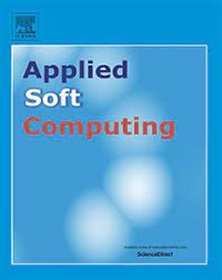Efficiency analysis of binary metaheuristic optimization algorithms for uncapacitated facility location problems
IF 7.2
1区 计算机科学
Q1 COMPUTER SCIENCE, ARTIFICIAL INTELLIGENCE
引用次数: 0
Abstract
This paper introduces binary adaptations of four metaheuristic optimization algorithms: the Binary Coati Optimization Algorithm (BCOA), Binary Mexican Axolotl Optimization Algorithm (BMAO), Binary Dynamic Hunting Leadership Optimization (BDHL), and Binary Aquila Optimizer (BAO). These algorithms were evaluated for their effectiveness in solving Uncapacitated Facility Location (UFL) problems, which aim to minimize total costs associated with customer-facility allocations and facility opening expenses by determining the optimal number of open facilities. Using 15 UFL problem instances from the OR-Lib dataset, the study assessed algorithm performance across 17 transfer functions (TFs), including S-shaped, V-shaped, and other variants, to address the binary nature of these problems. Performance metrics such as the best, worst, average, standard deviation, and GAP values were analyzed for each binary algorithm. Additionally, statistical analyses were conducted to further assess algorithmic performance. The Kolmogorov-Smirnov (KS) normality test was applied to determine the distribution characteristics of the results, followed by either ANOVA or Kruskal-Wallis tests, depending on the normality of the distributions. These statistical tests revealed significant differences in algorithm performance across different problem instances. Rank values were calculated based on GAP values and CPU times to facilitate comparisons across algorithm versions for the 15 UFL problems. Results underscored the critical role of TF selection in optimizing algorithm efficiency: BCOA performed best with TF11, BMAO with TF16 and TF17, BAO with TF10, and BDHL with TF15. Finally, a performance comparison on GAP values was conducted with two state-of-the-art PSO variants adapted for binary optimization. The proposed algorithms demonstrated either superior or competitive performance in solving UFL problems, validating their efficacy in complex optimization tasks and highlighting the influence of TFs on their performance.
求助全文
约1分钟内获得全文
求助全文
来源期刊

Applied Soft Computing
工程技术-计算机:跨学科应用
CiteScore
15.80
自引率
6.90%
发文量
874
审稿时长
10.9 months
期刊介绍:
Applied Soft Computing is an international journal promoting an integrated view of soft computing to solve real life problems.The focus is to publish the highest quality research in application and convergence of the areas of Fuzzy Logic, Neural Networks, Evolutionary Computing, Rough Sets and other similar techniques to address real world complexities.
Applied Soft Computing is a rolling publication: articles are published as soon as the editor-in-chief has accepted them. Therefore, the web site will continuously be updated with new articles and the publication time will be short.
 求助内容:
求助内容: 应助结果提醒方式:
应助结果提醒方式:


